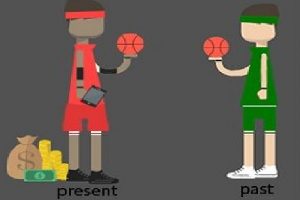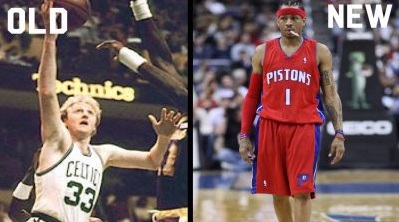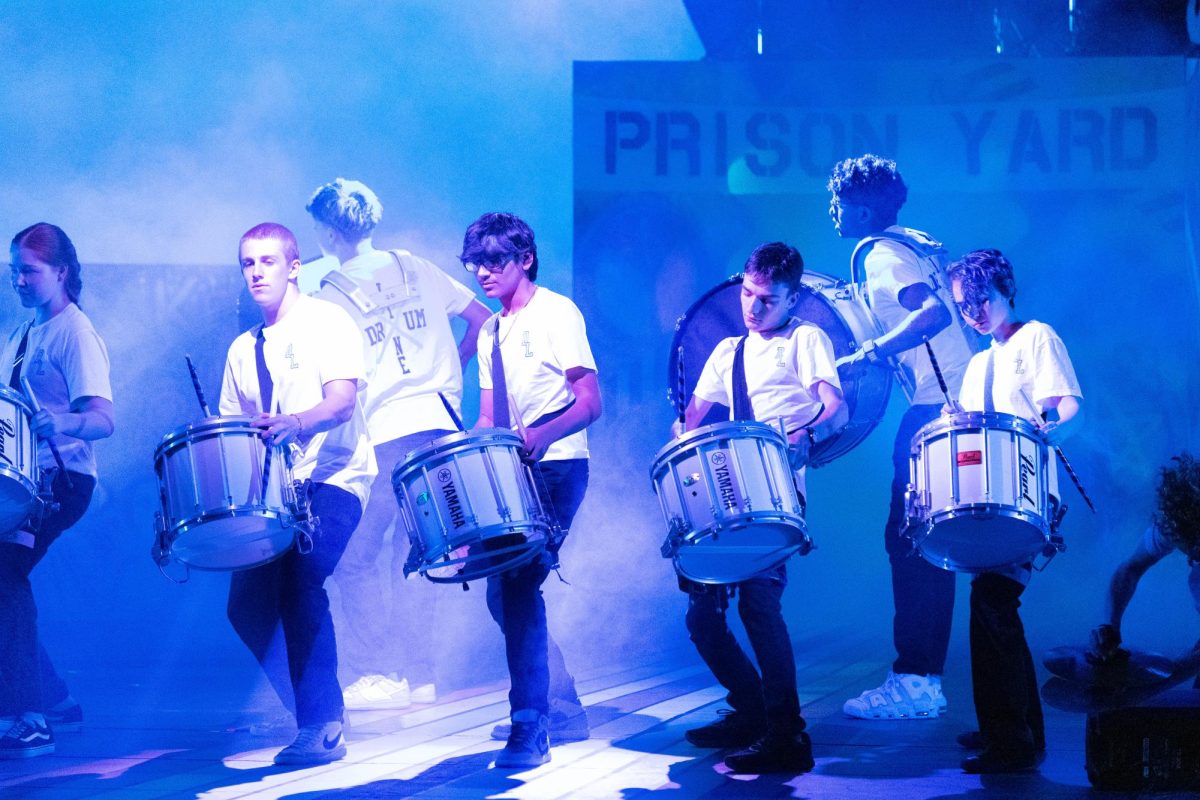The evolution of the athlete
December 21, 2016
Growing up in West Baltimore challenged New York Knicks forward Carmelo Anthony far more than anything he’s faced in the NBA. When he walked outside, he didn’t see fans begging for his autograph; instead, he saw a city suffering from drug use and violence.
After Baltimore-native Freddie Gray’s death in April 2015 ignited a discussion on police brutality, Anthony decided to join the conversation, first posting a picture to Instagram urging his followers to take a stand against violence. He also went back to Baltimore to join a peaceful march against police brutality and even teamed up with the NBA to create anti-violence ads.
Anthony’s cause went viral among his fans, inspiring them to demonstrate peacefully. With the personas athletes build and maintain over social media, they can draw real attention to pressing issues like Anthony did. Thirty years ago, this was not the case.
It’s certainly not just social media that has changed for athletes; 30 years ago they weren’t making millions of dollars and using advanced technology and nutrition to advance their game.
Athletes have become larger than life figures that have the potential to influence all of society. Three categories have played a major role in athletes’ growing presence: money, social media and entertainment, and science.
Money
For athletes today, money has become a symbol of status and a metric for success.
In today’s world, many athletes have come to believe that the more money they get, the better player they are.
Dwyane Wade played 13 years for the Miami Heat, winning three championships and taking in over $150 million in NBA-contract money. But in this year’s free agency, Wade left behind his fans and home for over a decade in Miami when he bolted to the Chicago Bulls for a two-year-deal that paid him $5 million more than the Heat.
Now look back at the Detroit Pistons of the 1980s, known as “The Bad Boys.” Point guard Isaiah Thomas was the number one overall pick in the NBA Draft, and he ended up on a struggling Pistons team that had lost 21 straight games in the season before. However, Thomas stuck it out in Detroit, and he was rewarded with All-Star teammates such as Bill Laimbeer, Dennis Rodman and Joe Dumars. When the going was tough, nobody on the team backed out and looked for more money to solidify their career. Instead, they stuck together, creating and maintaining a dynasty.
While this loyalty was a common occurrence 20 years ago, it’s rare nowadays due to players’ desire for money. Up until the ‘90s dynasties typically lasted around a decade: “The Bad Boys” of Detroit, Michael Jordan’s six-time-champion Bulls, Magic’s Showtime Lakers and Larry Bird’s Celtics. However, besides the unflappable Spurs, modern powerhouses fail to last despite stacking their rosters with big-name superstars. LeBron James played just five years for the Heat before returning to the Cavaliers and Shaquille O’Neal left the Lakers after winning three consecutive championships with Kobe Bryant.
This focus on money is symbolic of a larger sports trend: athletes focus more on money rather than the love of the sport. In turn, they often use money as fast as they earn it and spend it on unnecessary and discretionary items. Legendary boxer Evander Holyfield bought a $10 million mansion in Georgia after his boxing career, but was forced to auction it off due to foreclosure. Even though he made roughly $350 million, he went bankrupt.
For athletes today, money has become a symbol of status and a metric for success.

Sports media and entertainment
Nearly 90 percent of professional basketball players have Twitter accounts, according to a report by the NBA in 2015. And, sports fans are 67 percent more likely to use Twitter to improve their watching experience according to Navigate Research. For better or worse, social media has become a pervasive force in sports both on and off the field.
While social media can be used to promote good causes like Anthony’s, it also leaves athletes vulnerable to judgement and persecution. Just nine months ago, many NFL teams hoped to draft Ole Miss tackle Laremy Tunsil. But that quickly changed on the draft night when a video of Tunsil smoking marijuana in a gas mask surfaced on Twitter. Many teams backed off, judging Tunsil’s character after viewing the video—which they wouldn’t have had access to 30 years ago.
For fans, social media offers a unique perspective on sports and a behind-the-scenes look at players. In fact, The Players’ Tribune, formed in 2014 by former MLB player Derek Jeter, allows fans to hear stories published directly by players, offering information on athletes and their opinions.
This explosion of sports media all started when ESPN was founded in 1979 as the first 24-hour sports network. ESPN opened up sports to all audiences, allowing fans to follow every team for the first time. Before then, it was extremely hard for people to keep track of their favorite teams and athletes—the only way to find out the results of a game was to read the paper the next day—and only so much information could be extracted from the box score and photos from the game.
“Athletes have even more visibility now than they did a couple of decades ago given the explosion of television and social media attention they receive,” said Doug Lederman, editor of Inside Higher Ed, who has written widely about college athletics.
The 76ers’ Allen Iverson is an example of how an athlete became an international superstar due to his media exposure. On the court, he had a killer crossover move that could shake even the mighty Michael Jordan out of his shoes, and off the court, Iverson stood out by showing off his baggy clothes, tattoos and endless bling. With his sense of style and swag on and off the court, he made basketball cool. Increased media coverage from outlets like ESPN helped expand his image, attracting fans globally to see him play.
ESPN added a whole new element to the the relationship between sports and its fans: fans could experience the grace and beauty of each sport every night.
Technology
Technology has made a difference in all sports, from faster skis to lighter shoes
— journalist David EpsteinDue to advancements in science and technology, athletes are becoming bigger, faster and stronger, outpacing athletes from previous eras.
William Perry, commonly referred to as “The Fridge,” weighed 335 pounds when he was playing nose tackle for the Chicago Bears back in the 1980s, and he was feared league-wide because of his extraordinary physical presence. In 1980, only three players weighed over 300 pounds. Today the average nose tackle is 322 pounds.
Superior physical stature is not exclusive to active football players. Jesse Owens is a name synonymous with speed; he won the 1936 Olympic gold medal with an astounding 100 meter-dash time of 10.2 seconds. But in the 2012 Olympic finals, that time would have earned him last place by a gaping .14 seconds.
“Athletes have gotten more savvy about performance-enhancing drugs as well, and that’s made a difference in some sports at some times, but technology has made a difference in all sports, from faster skis to lighter shoes,” said journalist David Epstein in a 2014 TED talk about how athletes are getting bigger, faster and stronger.
One of the many reasons why athletes now outpace athletes of the 20th century is due to increased use of sport-specific training methods. For example, baseball players often focus on rotational power while basketball players work on jumping, sprinting and upper body strength. Increased attention to specialization has allowed athletes to excel at their specific sport; furthermore, the number of coaches per team has increased to support this specialization. The 1975 Super Bowl-winning Pittsburgh Steelers had only seven coaches; the 2015 Super Bowl champion Denver Broncos had 19.
In addition to improved training techniques, new advancements in three-dimensional modeling and health measurements enable athletes to go back and analyze what they need to improve on in terms of fitness pertaining to their sport.
Technological advancements have also enhanced athletes’ nutrition. Tennis star Novak Djokovic eats a gluten-free diet, drinks a vitamin and mineral shake everyday, sleeps in a hyperbaric chamber, and uses a biofeedback device to measure his stress levels.
Indians pitcher Trevor Bauer, known to obsess over training routines, studies the biomechanics behind pitching in order to help improve his own performance. This involves reviewing the axis of spin on each pitch using high-definition and slow-motion video.
Information about exercise and nutrition 30 years ago did not come close to what it is today. Athletes are pushing harder than ever to try and gain every possible advantage they can.
Because of money, social media, and science, sports has drastically changed over the past few generations. The growing influence of the modern athlete has put athletes in a much greater position to make a change. But the question that still remains is whether or not athletes should be the ones to make a change.








Avid Reader • Dec 22, 2016 at 9:33 pm
Your really strong